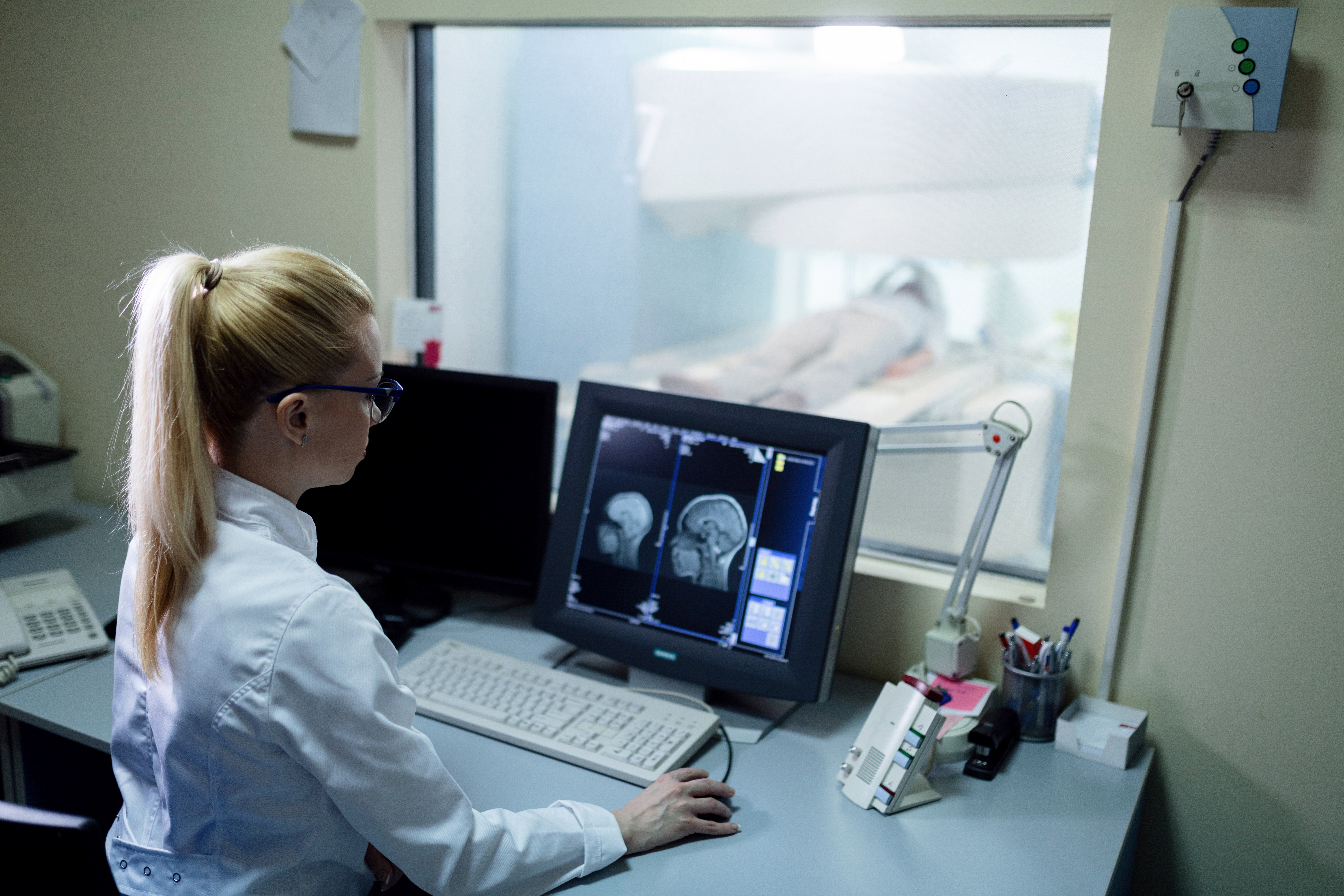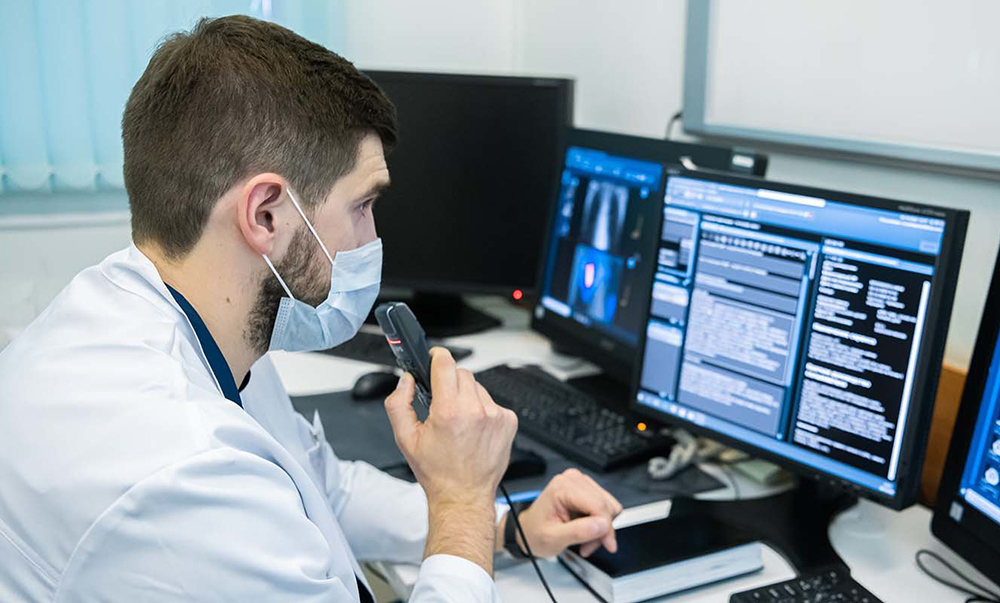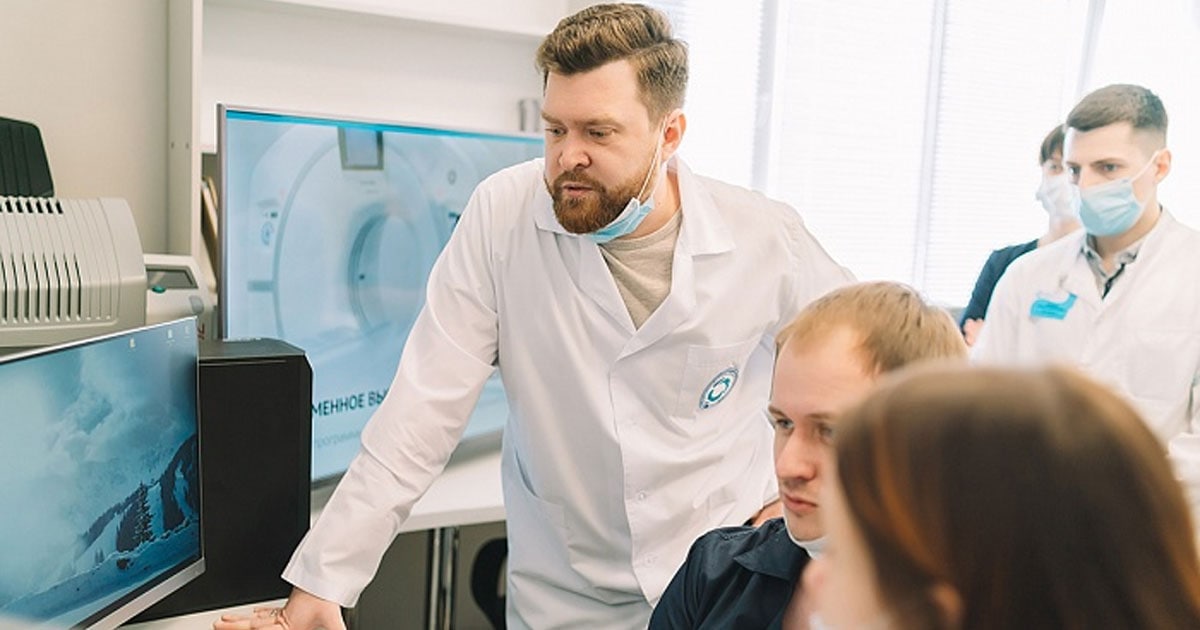How artificial intelligence opens up the radiology profession new facets
Over the past decade, the phrase "artificial intelligence in medicine" has migrated from futuristic fantasies and discussions to real life. This is especially true in radiology, where computer vision technology is already being applied in clinical practice. Artificial Intelligence analyses examinations - MRIs, CT scans, ultrasounds and others - and finds pathologies signs on them. Does this mean that the radiologist is no longer needed? How is these technologies' introduction affecting the profession?
We have been developing and implementing artificial intelligence systems for radiology Celsius for more than five years. The longer we work in this field, the more we interact with radiologists in our solutions development, the more we become convinced that artificial intelligence is not just a threat to the radiology profession - it expands it by opening up new professional activities for the doctor.
In this article, we want to list the main "offshoots" in the profession that have emerged at the radiology and artificial intelligence intersection, and to describe those physicians' role with whom we work every day.
Radiologist marker

Source: freepik.com
Another name for this field would be 'radiographer-teacher' - because it is the doctor who is directly involved in preparing the data for training the artificial intelligence. First, we need to understand why developers need this data in the first place.
A system like ours, Celsius, is a multi-layered neural network with a complex architecture. Developers with data a large amount, and the artificial intelligence analyses it, finds common patterns, and learns to interpret the data in a particular way depending on the task feed its input layer. It is like a child learning: at first, it does not know what a cat looks like (or what a cat is). Nevertheless, when its parents show it a thousand times and say "it's a cat", it will eventually form some features in its head that are characteristic of cats - and it can distinguish them from, for example, dogs.
For artificial intelligence to learn to find the malignant neoplasms and other pathologies radiological signs on medical images, it is not enough just to show it many different studies (mammograms, fluorograms, X-rays). It is necessary to mark these data - that is, to tell the neural network in which images there is a pathology and in which there is no pathology. Better yet, we need to "show" to it the areas of interest on the image.
This is exactly what we need radiological markers for: we, the developers, have no medical education and no clinical experience. Therefore, from the very beginning, we realised that we could not do without doctors and needed to build up work an ongoing process on data marking to develop the system.
Today, we have more than 40 mark-up doctors with whom we work on a commercial basis. Because our solutions work across four diagnostic modalities, each doctor specialises in his or her expertise area: some do mammograms; some do fluorograms, and so on across all modalities. The doctor chooses the examinations number that he/she wants/can do and is paid according to the work amount.
What is important to us when recruiting radiologists for marking up data? Firstly, experience: it must be more than five years. Secondly, the doctor has to pass an entry check on verified (validated) data beforehand. Thirdly, the radiologist must necessarily have a medical practice in parallel to the cooperation with us. In addition, the radiographer's willingness to follow the marking instructions clearly is important to us - because any inaccuracies will negatively affect the neural network training.
Medical consultant

Source: ict.moscow
The medical adviser is the link between the ML developer and the medical layout team. His or her tasks are not limited to this, though. They can be divided into three groups.
The medical consultant main task is to answer questions from the ML team regarding the medical field. The questions can be of all kinds - for example, what is a lung pattern, how do you know if there is a malignancy on the study, are a young and an elderly person different, and so on. His work another very important area is the product visual quality testing. The medical consultant analyses errors in the service, tries to find a common pattern in them and form a hypothesis on how the problem can be solved.
Example: the service finds pathology a certain class sign where there are none. After analysing such errors, the medical consultant finds that they occur on elderly people studies. Therefore, the ML team decides to use the patient age in training as well - to make the predictions more accurate.
The third area is the physician mark-up analysis. Since our mark-up doctors come from healthcare different branches and have different experiences, they have different approaches to the studies mark-up. Therefore, the consultant reviews their mark-ups, finds discrepancies and clarifies the requirements for the mark-ups - in other words, helps to compile the most understandable and accurate instructions for doctors.
In addition, the consultant also helps us with cross labelling - when we send one study to several doctors at once for analysis. It is not uncommon that such examinations results differ, and we are unable to find the underlying cause of without medical expertise: it may be that the examination demonstrates the pathology some complex presence and the doctor cannot draw an accurate conclusion without additional information, or that some doctors do not fully understand how these objects should be marked.
All of this is what the medical advisor helps us to understand. It is worth noting that over time, in addition to the medical field, he or she also begins to understand medical artificial intelligence. He already has how we train a neural network a general idea, how we run experiments, and what is relevant to us in general. Thatishisuniqueexpertise.
Our development managers (for each diagnostic area) say that before the medical consultant came along, they felt like "blind kittens", because they had nothing to fall back on, and it was often difficult to reach a full understanding with the mark up doctors. Now they interact with the consultant every day - and can quickly get an answer to any question where medical expertise is needed.
Medicaldirector

Oleg YurievichBronov, Celsius Medical Director, the highest category X-ray technician, Medical Sciences Candidate. Source: onko-kirov.ru
The doctors we have described above are directly involved in our solutions design and development. The medical director also knows our internal kitchen very well: he understands how products are developed and how they work in practice, and in some places, he even performs a medical consultant function some. In addition, he is involved in the company scientific work, in thinking through the strategy for further product development, and in selecting critical service functionality.
However, its distinctive feature is that it also represents us "in the outside world". After all, it is not enough to develop a good artificial intelligence for radiology - we need to communicate to the professional community why we need it. That is why the medical director regularly speaks at specialist conferences, talks about us to the professional community and tries to convey the message that artificial intelligence is not a replacement for a doctor, but an aid. In fact, he is our team medical part face.
We recently interviewed him and there was a lot about "doctor replacement". You can read it here.
Conclusion
Thus, the artificial intelligence development in radiology has also given doctors several new areas of development. We are confident that the future lies in this: because products like our Celsius are not static, they are constantly being refined. It is very likely that in the future, there will be demand for other specialists with medical training and doctors' experience in this field, such as specialists in evaluating artificial intelligence systems, introducing them into clinical practice, and selecting the best scenarios for their use.
We would like to take this opportunity to thank all the doctors we work with and have written about in this article. You are the real heroes; without you, nothing would have been possible!